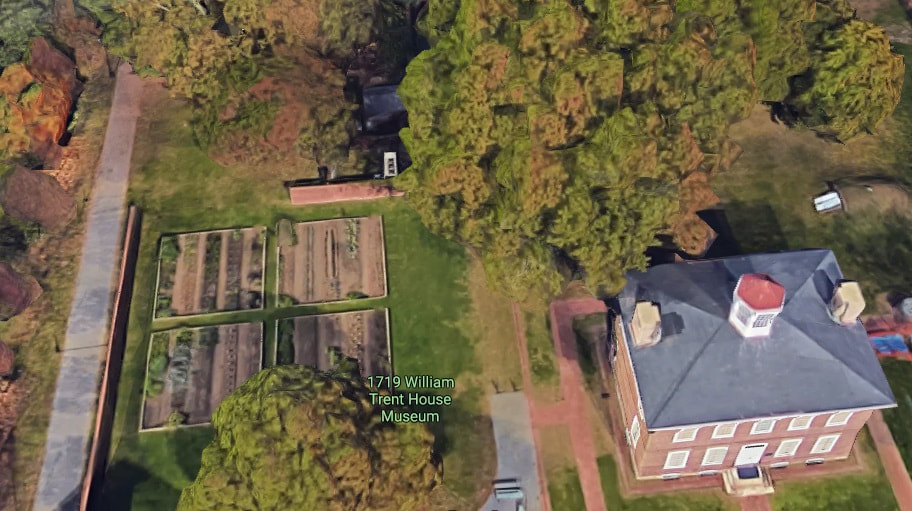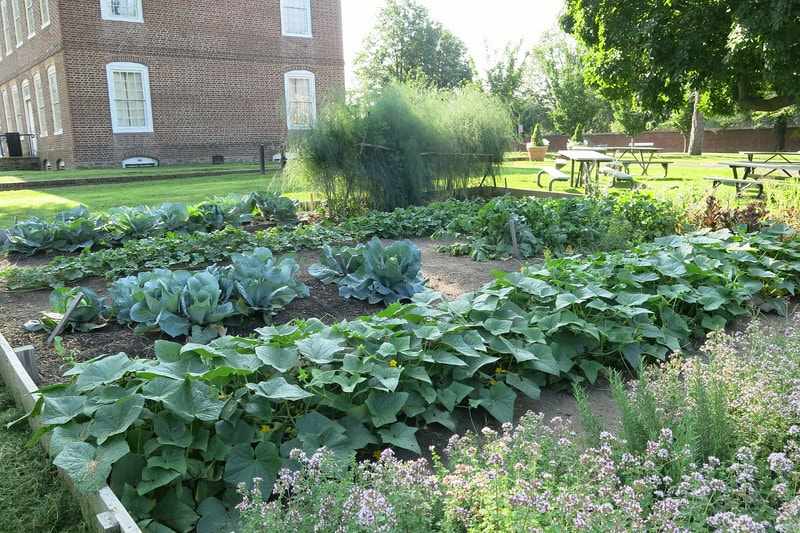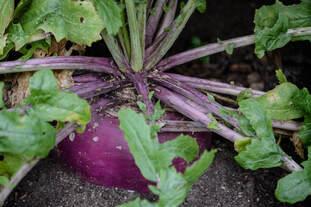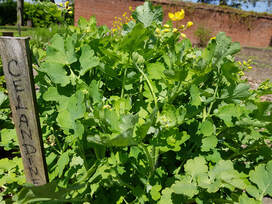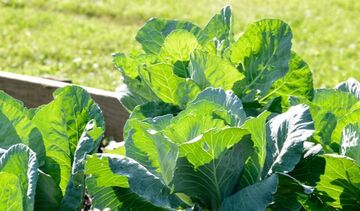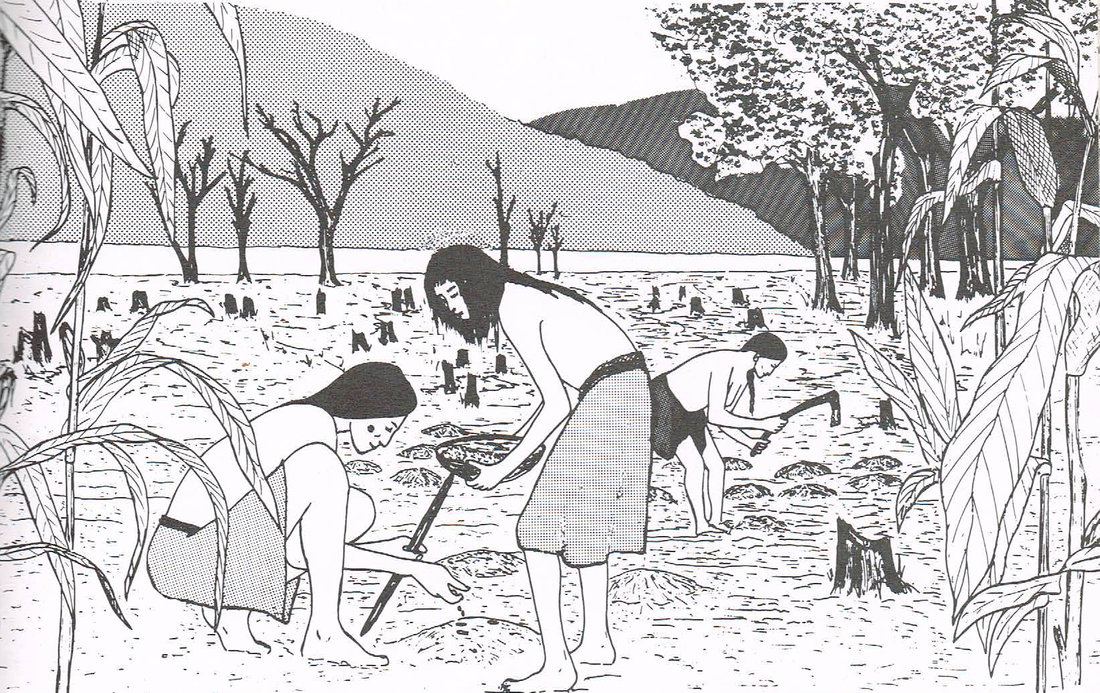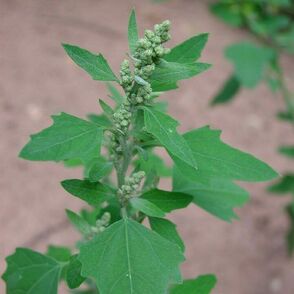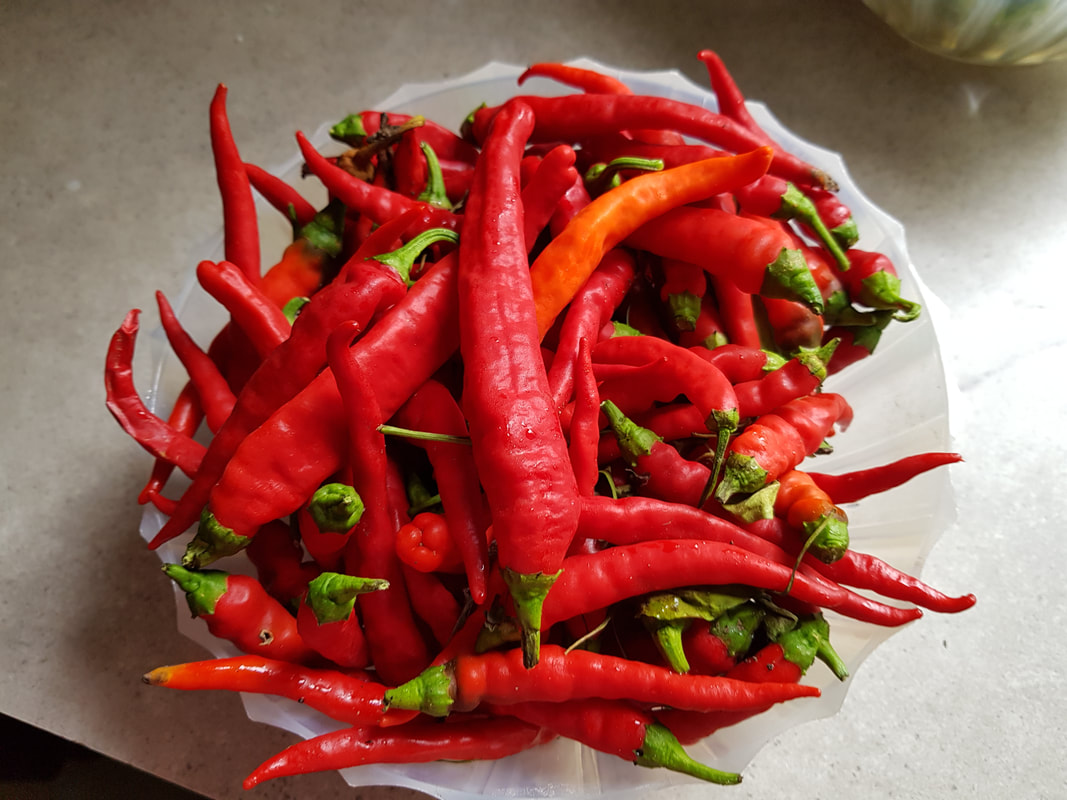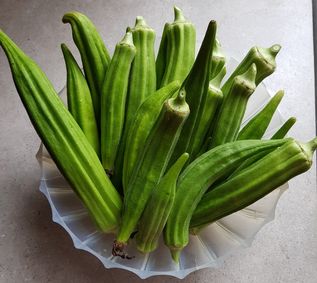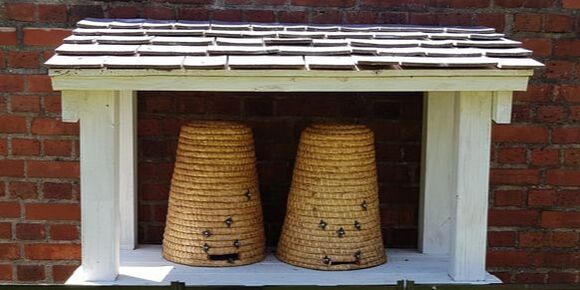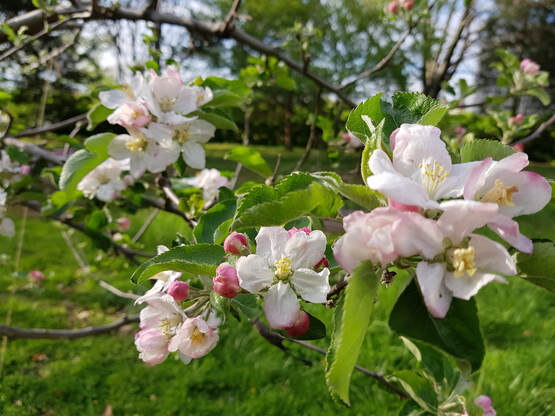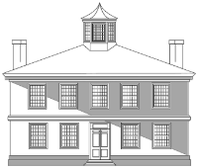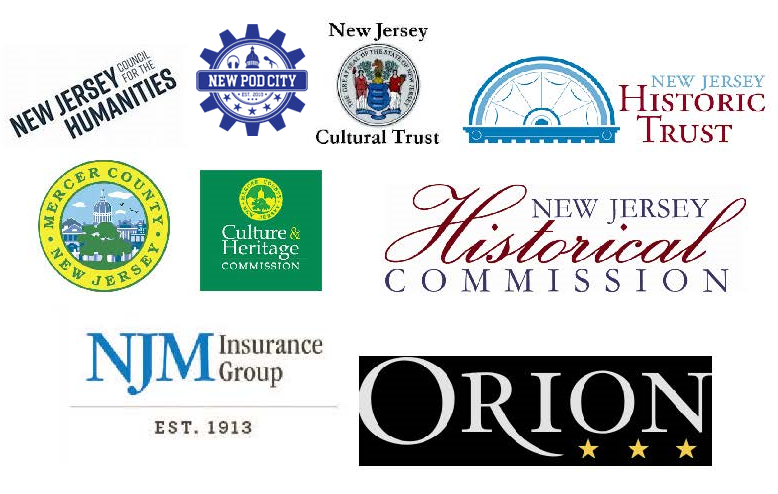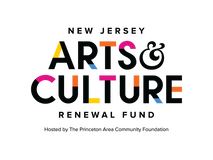Grounds & Gardens
|
The Trent House Museum's grounds include a small-scale garden, a replica bee house, and a planting of heirloom apple trees. These represent in miniature how produce was grown on the property that Trent purchased in 1714. The garden is divided into four raised beds and in 2021 was redesigned to represent what the three groups of people who occupied this land would have grown for food - the Lenape and their ancestors who lived here for many thousands of years before European arrival, English colonists like the Stacy and Trent families, and free and enslaved people of African descent who lived and worked here. |
The garden is designed and managed by historical horticulturist Charles Thomforde with the assistance of Rutgers Master Gardeners of Mercer County.
English Colonial Kitchen Garden
Though considerably smaller than Trent’s own kitchen garden would have been, two of the four beds in today’s garden are planted in an 18th century style with raised beds and tamped dirt paths between and within the beds.
These beds grow examples of vegetables and herbs that Trent’s garden probably contained. Many are still recognizable today: shell peas, cabbage, kale, asparagus, carrots, cucumbers, turnips, radishes, Irish and sweet potatoes, garlic, onions, as well as chives, spearmint, lemon balm. Other may be less known to modern gardeners, such as borage (for the flowers), good King Henry and sorrel (pot herbs), gooseberry and currants, citron melons (for pickling), radish pods, and elecampane (for medicine). Among the medicinal plants grown in the garden is celandine, used for various problems with the digestive tract including upset stomach, gastroenteritis, irritable bowel syndrome (IBS), constipation, loss of appetite, stomach cancer, intestinal polyps, and liver and gallbladder disorders.
Lenape Cultivated and Wild-Gathered Plants
|
The Lenape people who lived in the region of what is now New Jersey, Pennsylvania, and Delaware both grew crops in cultivated areas and harvested plants from the wild for food and other uses. One of the garden beds is planted with corn and squash (pumpkin) that would have been carefully tended. Native blueberry bushes and elderberry are included there as well as goosefoot, a wild plant with tiny seeds that resemble quinoa and may have been cooked in a similar way or eaten raw. Additional varieties will be added as we learn more.
|
African Diaspora Kitchen and Market Garden
|
Another garden bed is planted with plants that might have been grown both to add favorite flavors to the meals cooked by free and enslaved people of African descent and to sell or barter in local markets. Plants like okra and chili peppers would have been familiar from African and West Indian cuisine, while potatoes, squash, and pumpkins could have been taken to market to trade for other goods or to sell for cash. Some enslaved people were able to accumulate enough money to purchase their own freedom and one way to obtain cash was through selling produce and other items.
|
The Bee House
|
Adjacent to the garden is a replica of a “bee house” with two skeps, which housed bees. Europeans brought honey bees to North America in the early 1600s. By the time William Trent built his house at the Falls of the Delaware in 1719, escaped wild bees were living in the woodlands all over the colonies. The native people called bees “the Englishman’s fly.” Bees were kept to produce honey as a sweetener and wax for candles. The role of bees in pollinating food crops was not discovered until the mid-1700s. |
The Apple Orchard
|
An advertisement to sell or lease the House in 1759 described “an Orchard of about 350 Apple-trees, whereof about 150 are old bearing Trees, the others just beginning to Bare and are of the best Grafted Fruit, there is also a fine Collection of other Fruit, to wit, Peaches, Damsels, Cherries of several Sorts, Squinces, English Walnuts, Grapes, Raspberries, and a handsome large [kitchen] Garden.” The Pennsylvania Journal, no. 866, 12 July 1759, reprinted in Nelson, Newspaper Extracts, first Series, Vol XX, page 365. Our cultivated apples are not native to the New World, probably originating in Central Asia. Grown for thousands of years in Asia and Europe, they were introduced to North America by European colonists. From the beginning, European arrivals in New Jersey grew apples for cider. They also grew apples for eating fresh, for drying, and for cooking. The Trent estate would have included an orchard sufficient to yield 1,000 gallons of cider per year. |
Today there is a miniature orchard of heirloom varieties likely grown in the region in the 1700s, researched by Charles Thomforde and designed and planted as the Eagle Scout project of Sidhant Swami of Troop 43, Princeton, with the help of members of the Rutgers Master Gardeners of Mercer County and other volunteers. To learn more about apples and the Trent House orchard, click here. For a map of the orchard, click here.


